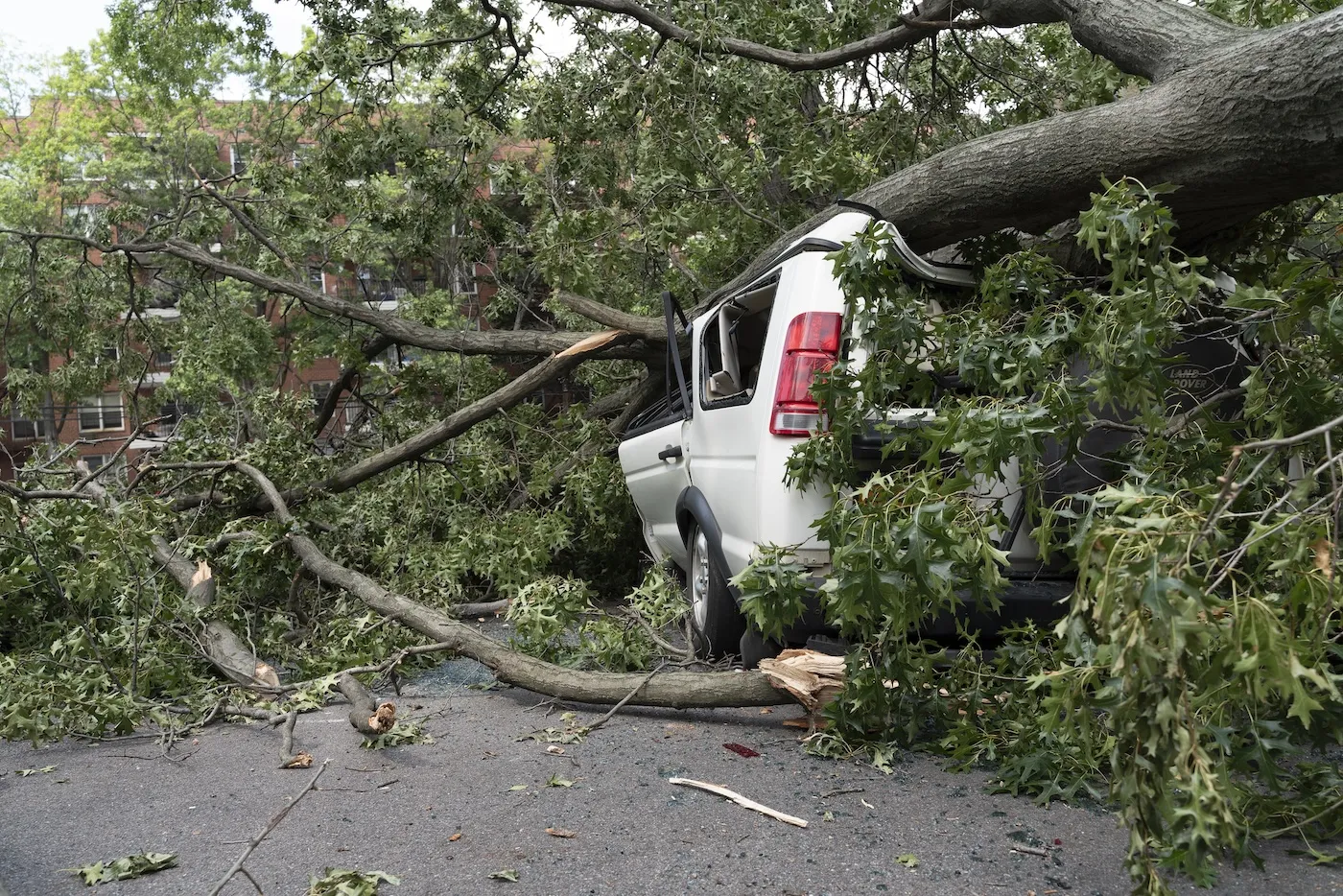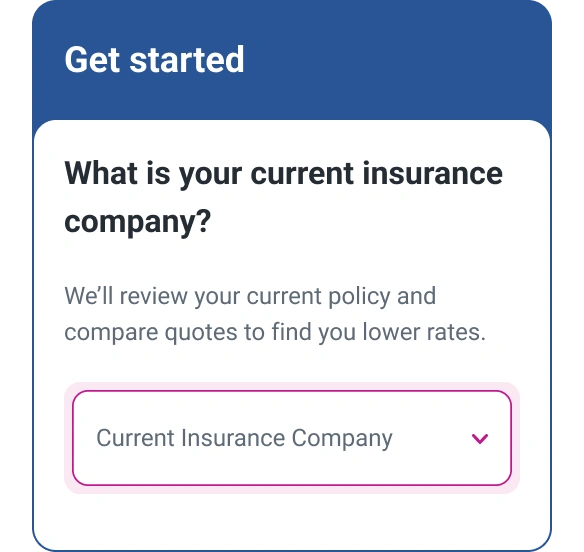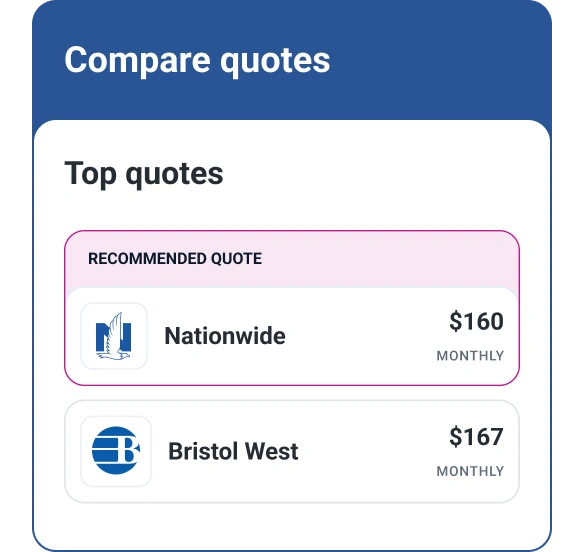Does Comprehensive Coverage Cover Natural Disasters?
Quick Answer
Comprehensive car insurance typically covers vehicle damage from natural disasters. Not every auto policy includes comprehensive insurance, however, so it’s important to find out if you have it and understand what is covered.

If a wildfire, flood or hurricane damages or destroys your car, will your insurance policy have you covered? Natural disasters are typically covered under comprehensive car insurance. Comprehensive coverage is a policy option that generally pays to repair or replace your vehicle if it's damaged by something other than a traffic collision. However, the specifics can vary depending on your policy, so you should review your policy details to make sure you understand what's covered.
What Is Comprehensive Car Insurance?
Comprehensive car insurance, also known as "other than collision" coverage, works in tandem with collision insurance to protect your car. Collision insurance covers damage that occurs when your car collides with another vehicle or an object, such as a fence or telephone pole. Comprehensive insurance covers non-collision damage to your car, including fire, theft, falling objects such as tree branches, vandalism or natural disasters.
Learn more: What Is Full Coverage Car Insurance?
Does Comprehensive Cover Natural Disasters?
Yes, comprehensive insurance covers natural disasters. Here's a rundown of the specific disasters that are usually covered under comprehensive car insurance.
Hurricanes and Tropical Storms
Comprehensive insurance typically covers damage to your car from hurricanes and tropical storms. However, you must have a policy in place before an official hurricane or storm watch or warning is issued. Once an official storm watch or warning has been issued, insurers temporarily stop approving new policies or allowing changes to existing policies.
Hail
Hail damage to your car is generally covered by comprehensive auto insurance. For example, your comprehensive insurance may pay to repair dents or chipped paint, cracked or broken glass or damaged safety sensors.
Windshield damage is common with hailstorms, and replacing a newer car's windshield can be expensive, especially if windshield cameras and sensors need recalibrating. Comprehensive insurance typically covers the repair, but costs can add up if you have a high deductible or your vehicle frequently sustains hail damage. In this situation, you may want to consider add-on auto glass and windshield coverage. This extra coverage has a low deductible or none at all, so you don't have to pay your comprehensive deductible every time your auto glass needs repairing.
Flooding
Comprehensive car insurance generally covers flood damage to your vehicle. This typically includes water damage due to hail breaking your car's windows or windshield, water damage from driving through a deep puddle, and rust or mold caused by flood waters. However, comprehensive auto insurance won't pay for damage caused by negligence. For example, if water soaked the inside of your car because you didn't roll up your windows, the damage likely won't be covered.
Earthquakes
Repairing or replacing your car due to earthquake damage is usually covered by your comprehensive auto insurance. In addition to structures, telephone poles or tree branches falling on your car during an earthquake, there could be damage from the fires, explosions or flooding that often follow a quake. Consider purchasing comprehensive coverage if you're in a state with a high risk of earthquakes—that is, California, Alaska, Oregon or Washington.
Tornadoes
Whether a tornado lifts your car into the air or drives a tree branch through the windshield, comprehensive auto insurance typically covers the damage. Texas, Iowa, Nebraska, Illinois and Missouri were the states most often affected by tornadoes in 2024, according to the Insurance Information Institute (III), so comprehensive auto insurance may be a smart purchase if you live in these areas.
Wildfires
Damage to your vehicle from fire and smoke—including that from a wildfire—is typically covered by comprehensive auto insurance. Comprehensive coverage also usually pays for any damage that firefighters cause to your vehicle while putting out the fire.
Other Natural Disasters
Severe storms can cause mudflow (essentially, a river of mud) or landslides, both of which can damage or destroy your car. Fortunately, comprehensive auto insurance generally covers damage to your vehicle from mudflow and landslides.
Looting and similar crimes sometimes occur in the wake of a natural disaster. If you have comprehensive auto insurance, you're typically covered if your car is stolen or vandalized or if parts are stolen.
Learn more: 11 Scenarios Your Car Insurance Won't Cover
Will My Premium Increase After a Claim From a Natural Disaster?
Your car insurance premiums may increase after you file a comprehensive insurance claim for a natural disaster. However, the increase may not be as big as the increase that filing a claim after an accident would trigger.
In addition to your previous claims, insurance carriers will also consider how likely you are to file claims in the future. If severe weather incidents are on the rise in your area, your insurance company might raise your rates to make up for the growing risk that you'll file a disaster-related claim—even if you've never filed one before.
The frequency of extreme weather events such as hurricanes, hailstorms and floods is partly why average auto insurance premiums are rising, according to insurance publication Claims Journal. However, your comprehensive car insurance rates could also go up for reasons unrelated to weather. For example, your insurer may raise rates across the board to compensate for increasing auto parts, repair labor or operating costs.
Do You Need Comprehensive Coverage?
Whether or not you need comprehensive coverage depends on whether you're financing or leasing the car. Even when not required, carrying comprehensive may make financial sense.
If You're Leasing or Financing Your Vehicle
Nearly every state requires drivers to carry liability insurance, which covers damage to the other driver's car and their medical expenses after an accident. Comprehensive coverage, on the other hand, is generally optional unless your car is leased or financed. If you're still making payments on your vehicle, your lender or lessor will typically require both collision and comprehensive coverage to safeguard their financial interest.
If You Own Your Vehicle Outright
Once your vehicle is paid off, it's up to you whether to buy comprehensive coverage. You may decide to skip comprehensive coverage once your paid-off vehicle is older and not worth very much. A general rule is to cancel comprehensive and collision insurance if your car is worth less than the annual premiums for both types of coverage.
Example: If you're paying a combined $300 a year for comprehensive and collision insurance, you might consider dropping the coverage if your car is worth less than $3,000.
Before passing up comprehensive coverage, though, consider your finances and your exposure to risk. Do you live in an area where natural disasters (or auto theft) are common? Would you struggle to come up with the cash to repair or replace your car? If so, purchasing comprehensive and collision coverage may make financial sense. On average, comprehensive car insurance costs $263 annually or about $22 per month, according to Insurance.com.
Learn more: How Much Car Insurance Do I Need?
The Bottom Line
Being prepared for natural disasters can help reduce your risk and provide peace of mind. So can purchasing comprehensive car insurance. But before signing up for comprehensive coverage, make sure you understand which natural disasters may be covered under your policy.
No matter what type of auto insurance you need, shopping around can help you find the most affordable option. Simplify comparison shopping with Experian's free auto insurance comparison tool. It gathers quotes from multiple top car insurance companies all in one place, so you can easily see which provider offers the best rates.
Don’t overpay for auto insurance
If you’re looking for ways to cut back on monthly costs, it could be a good idea to see if you can save on your auto insurance.
Find savingsAbout the author
Karen Axelton specializes in writing about business and entrepreneurship. She has created content for companies including American Express, Bank of America, MetLife, Amazon, Cox Media, Intel, Intuit, Microsoft and Xerox.
Read more from Karen

